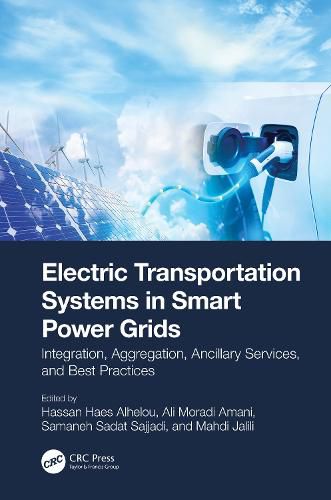Readings Newsletter
Become a Readings Member to make your shopping experience even easier.
Sign in or sign up for free!
You’re not far away from qualifying for FREE standard shipping within Australia
You’ve qualified for FREE standard shipping within Australia
The cart is loading…






The leading countries around the globe including Australia has taken serious steps to decarbonize their energy and transportation sectors as part of their obligations for suitable future with less emission and better environment. The decarbonization plans in different countries have enforced changes such as increase in the penetration level of renewable energy sources and introducing electric vehicles as a target for future transportation system. This is the point where mobility meets electricity and brings new challenges and opportunities, especially in the integration with modern power systems. The main impact would be in the demand-side and the distribution network, while these impacts would be also reflected in the operation, control, security and stability of transmission systems. This creates a new grid architecture characterized by a growing variability and uncertainties. Moreover, the growth in the share of renewable in the total energy market is one of the major origins of the increasing fluctuations in the balance between generation and consumption in the whole system. Therefore, the key challenge lies in developing new concepts to ensure the effective integration of distributed energy resources and electric transportation systems including EVs, in existing and future market structures. To address these issues, EVs, E-bus, and other smart appliances in the demand-side can be aggregated to form a virtual Power Plants which are considered as an efficient solution to provide operational flexibility to the grid. The EV-based virtual power plants can also provide several services for Distribution System Operators, Transmission System Operator, and even local prosumers within the energy community
Key Selling Features:
Services to power systems from EVs and electric transportation sector
Frequency control in modern power systems using aggregated EVs
The integration and interaction between EVs and Smart grids
Electric vehicles aggregation methods for supporting power systems
Flexibility provided from electric transportation system to smart energy sector
High penetration level of renewable energy sources and EVs
$9.00 standard shipping within Australia
FREE standard shipping within Australia for orders over $100.00
Express & International shipping calculated at checkout
The leading countries around the globe including Australia has taken serious steps to decarbonize their energy and transportation sectors as part of their obligations for suitable future with less emission and better environment. The decarbonization plans in different countries have enforced changes such as increase in the penetration level of renewable energy sources and introducing electric vehicles as a target for future transportation system. This is the point where mobility meets electricity and brings new challenges and opportunities, especially in the integration with modern power systems. The main impact would be in the demand-side and the distribution network, while these impacts would be also reflected in the operation, control, security and stability of transmission systems. This creates a new grid architecture characterized by a growing variability and uncertainties. Moreover, the growth in the share of renewable in the total energy market is one of the major origins of the increasing fluctuations in the balance between generation and consumption in the whole system. Therefore, the key challenge lies in developing new concepts to ensure the effective integration of distributed energy resources and electric transportation systems including EVs, in existing and future market structures. To address these issues, EVs, E-bus, and other smart appliances in the demand-side can be aggregated to form a virtual Power Plants which are considered as an efficient solution to provide operational flexibility to the grid. The EV-based virtual power plants can also provide several services for Distribution System Operators, Transmission System Operator, and even local prosumers within the energy community
Key Selling Features:
Services to power systems from EVs and electric transportation sector
Frequency control in modern power systems using aggregated EVs
The integration and interaction between EVs and Smart grids
Electric vehicles aggregation methods for supporting power systems
Flexibility provided from electric transportation system to smart energy sector
High penetration level of renewable energy sources and EVs